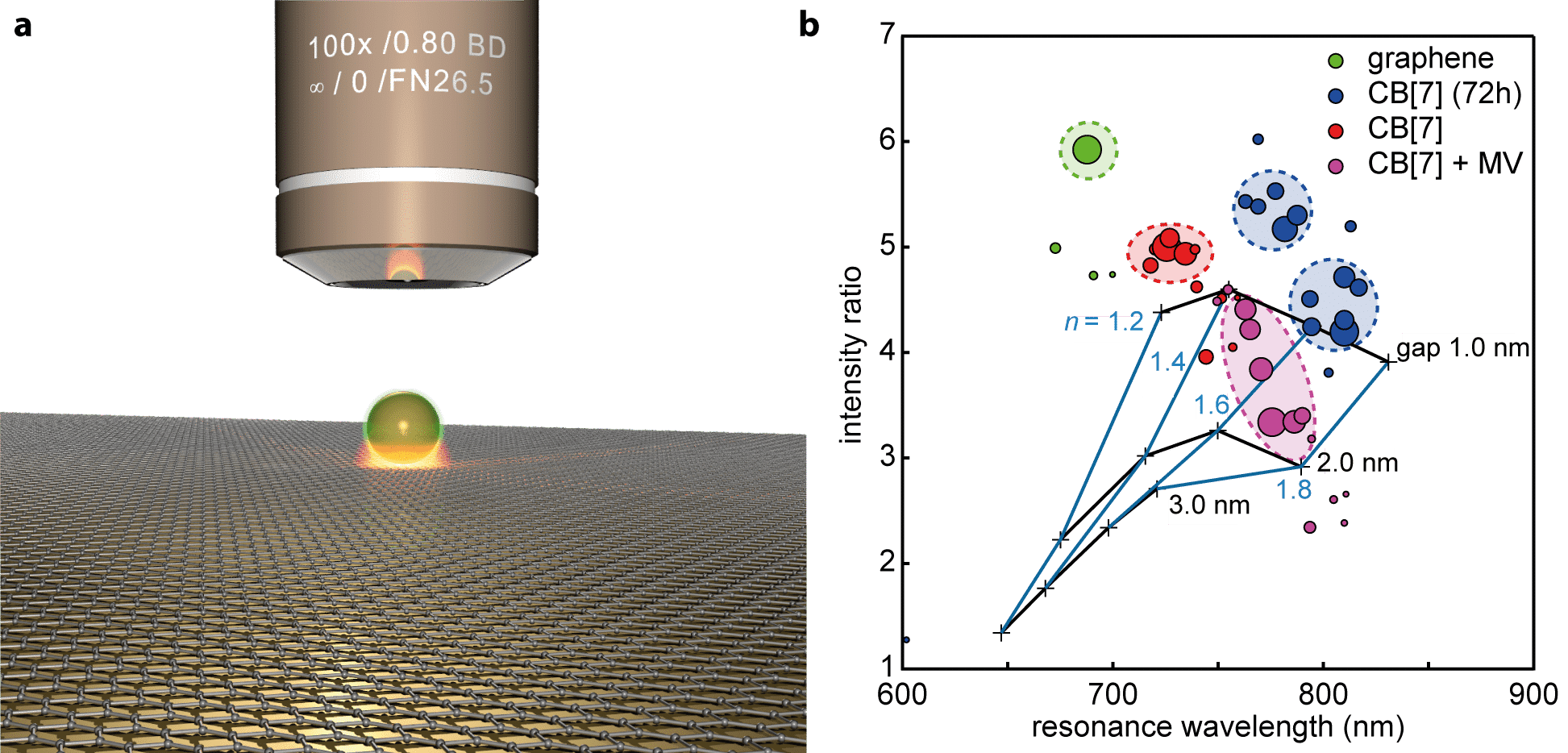
Unfolding the Contents of Sub-nm Plasmonic Gaps using Normalising Plasmon Resonance Spectroscopy
Thin films of only single molecular thickness have gained tremendous recent attention for their unique and promising properties, since at these length-scales the optical, mechanical and electrical properties of such ultrathin materials changes drastically. However, measuring the thickness and refractive index of such small volumes of material becomes increasingly difficult, and dependent on the confinement. [1]
By placing gold nanoparticles on one side of such a spacer and a gold film on the other, their resulting plasmonic coupling across the sandwiched monolayer creates intense plasmonic hot spots. These have large field-enhancements tightly confined within the cavity formed by the spacer and the metal two metallic surfaces. [2] The localised field in such geometries is extremely sensitive to morphological fluctuations and subtle changes in the dielectric properties of the cavity contents.
Here we present an optical method that pins down the properties of the gap contents with high sensitivity, termed normalising plasmon resonance (NPR) spectroscopy. We use this on a variety of ultrathin molecular spacers such as filled and empty cucurbiturils, and graphene. [3] Clear differences in the spectral positions and intensities of plasmonic modes observed in the scattering spectrum resolve thickness differences of <0.1nm, and refractive index changes from molecular filling. [4]

Figure 1: a Goemetry of nanoparticle-on-a-gold-film with graphene as spacer. b Normalized scattering intensity from the plasmonic hot-spot plotted against its resonance wavelength as observed in experiments and numerical simulations.
[1] D. E. Aspnes, Thin Solid Films 89, 249–262 (1982).
[2] P. K. Aravind, et al. Chem. Phys. Lett. 85, 396–403 (1982).
[3] J. Mertens, et al. Nano Lett. 13, 5033–5038 (2013).
[4] B. de Nijs, et al. Faraday Discuss. accepted, doi: 10.1039/C4FD00195H (2014).
fb400@cam.ac.uk
Powered by Eventact EMS